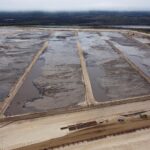*Figures in Canadian dollars unless stated otherwise*
Husky Energy (ticker: HSE), one of Canada’s largest integrated energy companies, amended its 2016 guidance just six weeks after its initial release. The first line of the statement says, “Husky Energy is taking additional steps to improve its resilience through the extended low commodity price environment.”
The additional step consists of a revised 2016 capital budget of $2.1 to $2.3 billion, down approximately 27% from its first plan of $2.9 to $3.1 billion. The savings comes from deferring the company’s discretionary activities in Western Canada. Accordingly, its 2016 production range is revised downward to 315 to 345 MBOEPD, down less than 5% from its original estimate of 330 to 360 MBOEPD.
In the first round of 2016 guidance released on December 8, 2015, Husky lowered its earnings break-even point to “sub-$40” West Texas Intermediate prices, down from a mid-$50s price point earlier in the year. In the aftermath of the commodity downturn, Husky has slashed its sustaining and maintenance costs by 15% to 20% to create upside on its oil and gas operations.
 The latest plans are significant ramp-downs from previous budgets. The 2015 capital plan of $3.4 billion (roughly 50% higher than its plan for the upcoming year) was significantly less than its plans of 2013 and 2014, which ranged from $4.8 to $5.0 billion per year. The company has already switched to a stock dividend to temporary replace its cash dividend to withstand the downcycle.
The latest plans are significant ramp-downs from previous budgets. The 2015 capital plan of $3.4 billion (roughly 50% higher than its plan for the upcoming year) was significantly less than its plans of 2013 and 2014, which ranged from $4.8 to $5.0 billion per year. The company has already switched to a stock dividend to temporary replace its cash dividend to withstand the downcycle.
“We have set conservatives price planning assumptions – maybe today it doesn’t look so conservative,” said Asim Ghosh, Chief Executive Officer of Husky Energy, in a December conference call. “As I’ve said this is not a price forecast but the basis on which we have built our business plan. This plan will generate cash flow from operations that will be in balance with our capital expenditures, and so the company will be cash flow neutral at that price planning assumption.”
Possible Sales Incoming
In the press release, Husky announced it is marketing select midstream and downstream assets in its Lloydminster region. However, the company plans on retaining operatorship in order to preserve its drill bit to end user integration.
Other legacy upstream assets in its deferred Western Canada region are also being explored for a possible sale. Royalty interests are also included in this process, and total production from the marketed assets amounts to about 57 MBOEPD and do not include any oil sands or heavy oil properties.
Management will present on Wednesday at the CIBC Institutional Investor Conference in British Columbia.






